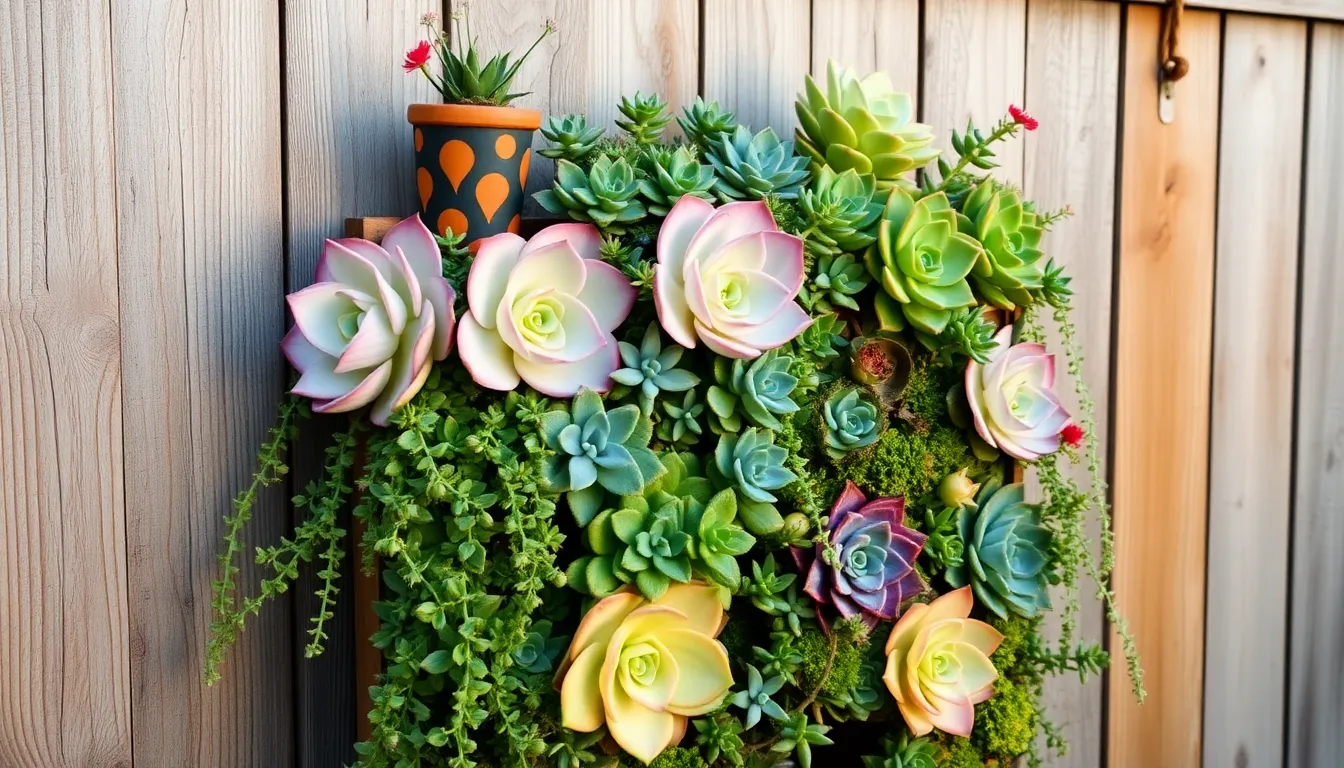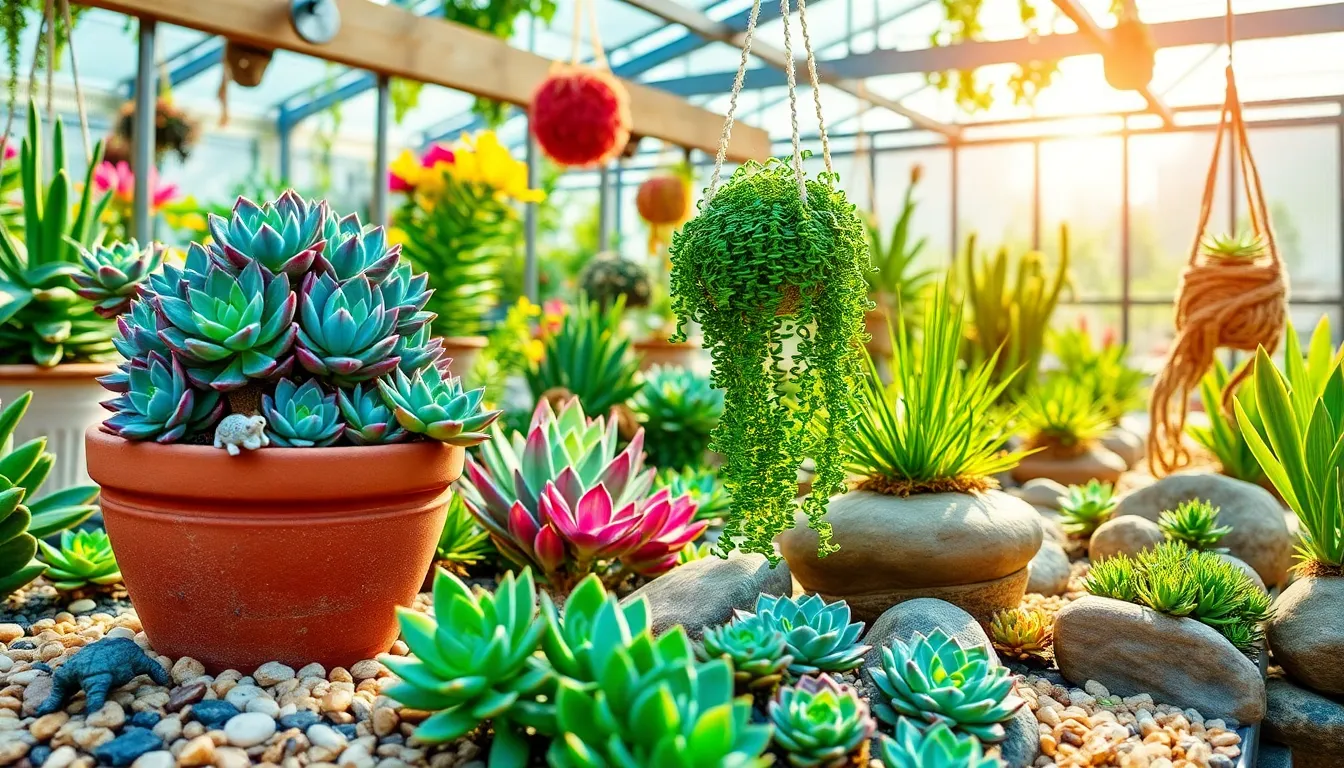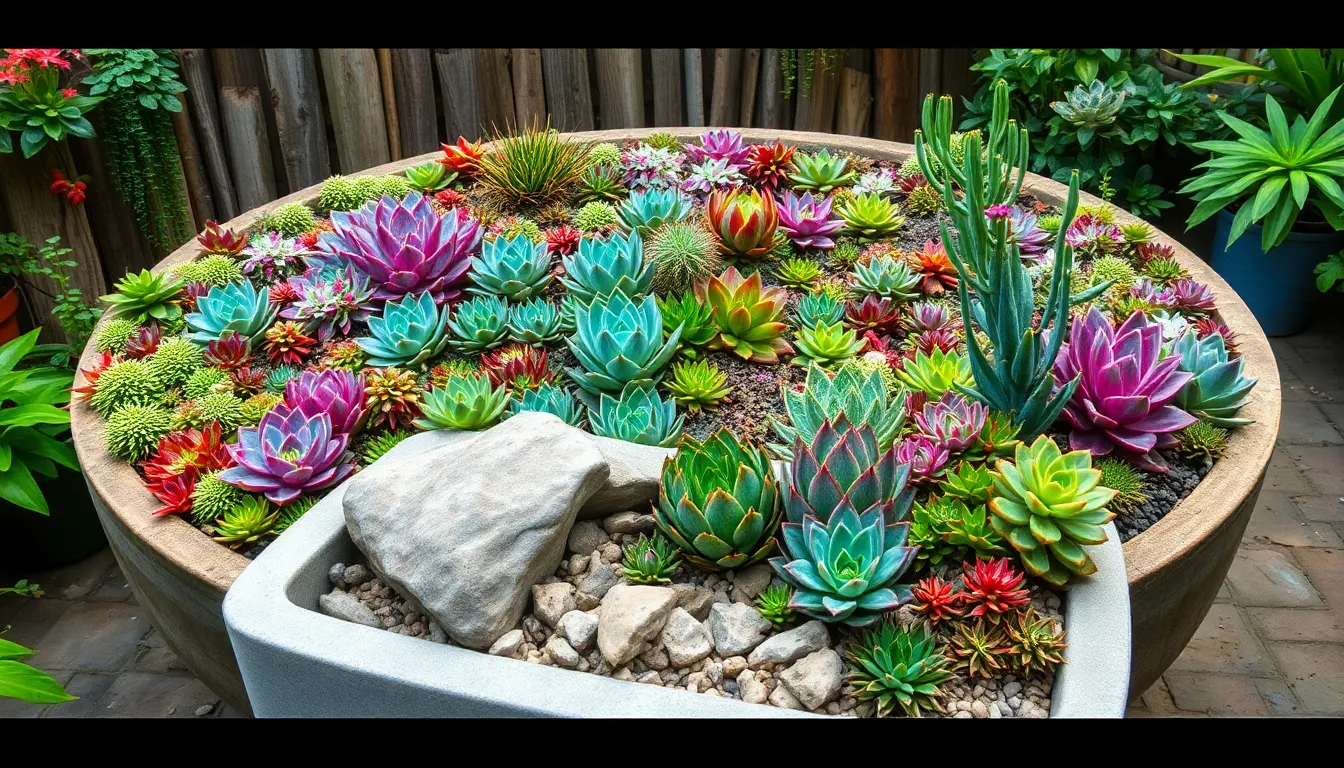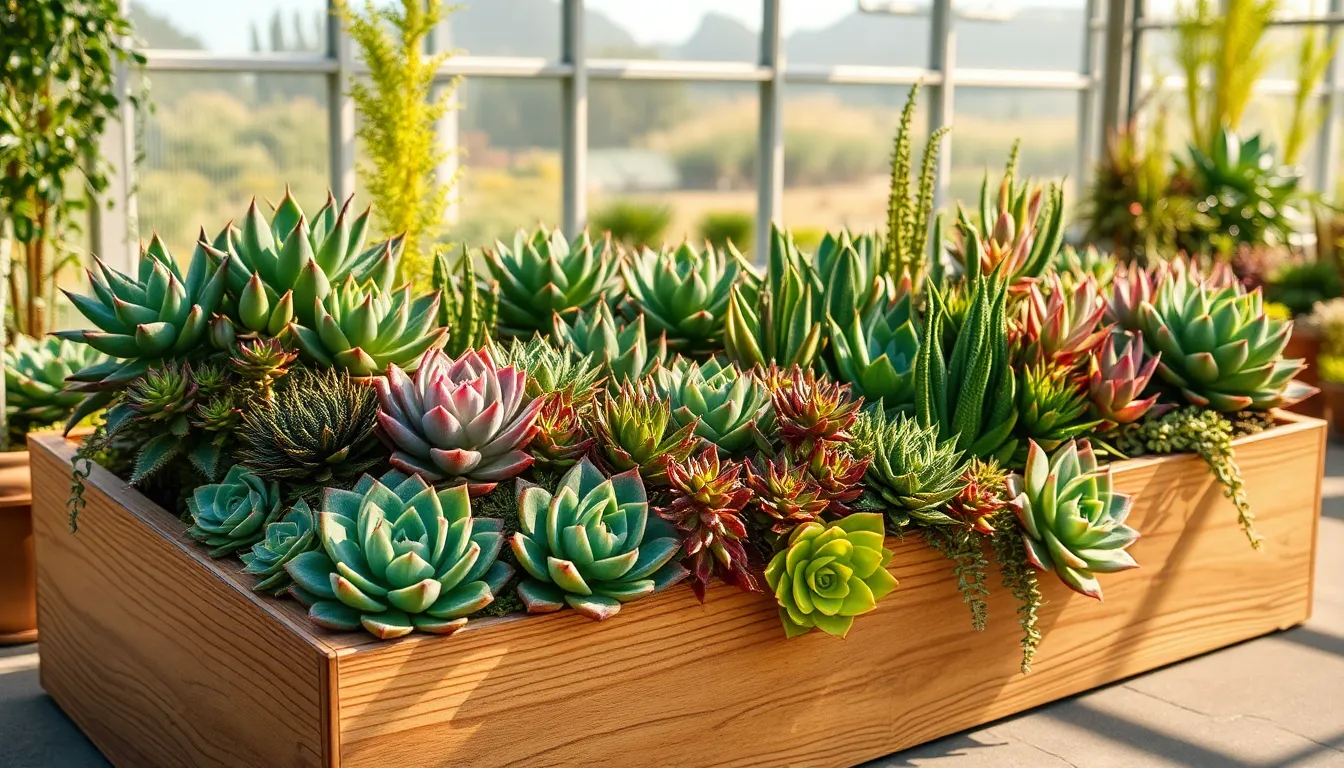Imagine a garden that doesn’t just grow outwards, but upwards, transforming your space into a lush, living tapestry. Vertical succulent gardens are not only a striking addition to any home or garden but also a practical solution for those with limited ground space. These gardens provide a unique opportunity for both beginner and seasoned gardeners to experiment with textures, colors, and forms, creating a personalized oasis that defies gravity. Vertical gardening, especially with succulents, offers an exciting challenge that promises rewarding results and a conversation piece that never fails to impress.
As our living spaces shrink and urbanization increases, the need to maximize our green areas becomes more crucial. Vertical succulent gardens offer an innovative way to bring nature closer, providing a refreshing burst of greenery that can be enjoyed even in the smallest of spaces. Whether you’re a gardening novice eager to dip your toes into the world of plants, or a seasoned green thumb looking to expand your repertoire, this article will guide you through 13 inspiring designs. You’ll learn how to craft your vertical masterpiece, with practical tips on plant selection, maintenance, and design principles that ensure your vertical garden thrives.
In this article, we will delve into the creative and practical aspects of vertical succulent gardening. You’ll discover bold designs that redefine traditional gardening, offering a fresh perspective and endless possibilities. With our step-by-step guidance, you’ll gain the confidence to create a vertical succulent garden that not only beautifies your space but also nurtures your passion for gardening. Let’s embark on this vertical journey together, blending creativity with practicality, to cultivate a stunning display of nature’s resilience and beauty.
Choosing Ideal Vertical Planters
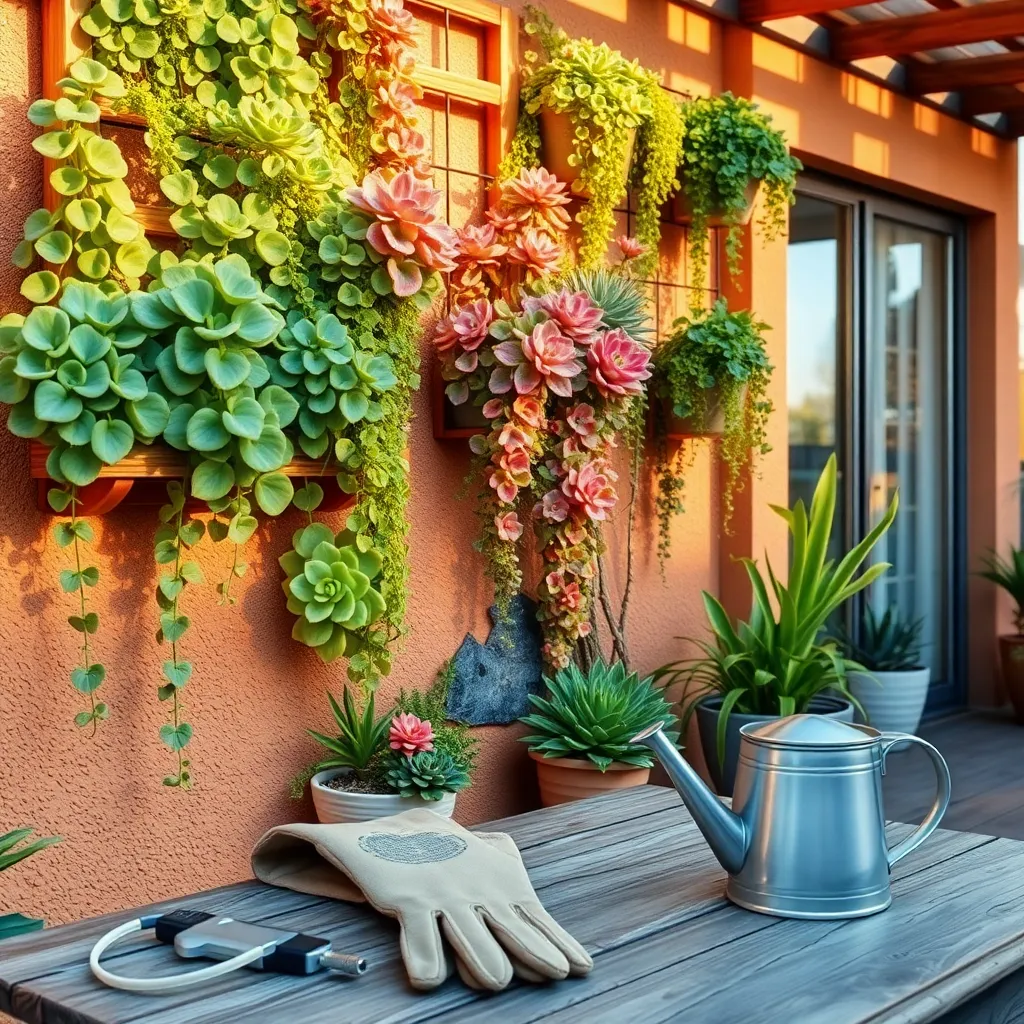
When selecting vertical planters for your succulent garden, consider the available space and sunlight exposure. Choose planters made of materials like wood, ceramic, or metal that can withstand outdoor conditions and provide adequate drainage.
To cater to the varied root depths of succulents, look for planters with different pocket sizes. This allows you to accommodate a variety of succulent species, from shallow-rooted sedums to deeper-rooted echeverias.
It’s crucial to use a specialized soil mix for succulents, which typically includes a blend of sand, perlite, and potting soil. This ensures excellent drainage, preventing root rot—a common issue with overwatering.
For beginners, start with a simple vertical planter that requires minimal maintenance, such as a wall-mounted pocket planter. Advanced gardeners might consider building their own planter using reclaimed materials for a custom fit and design.
Wall-Mounted Succulent Frames
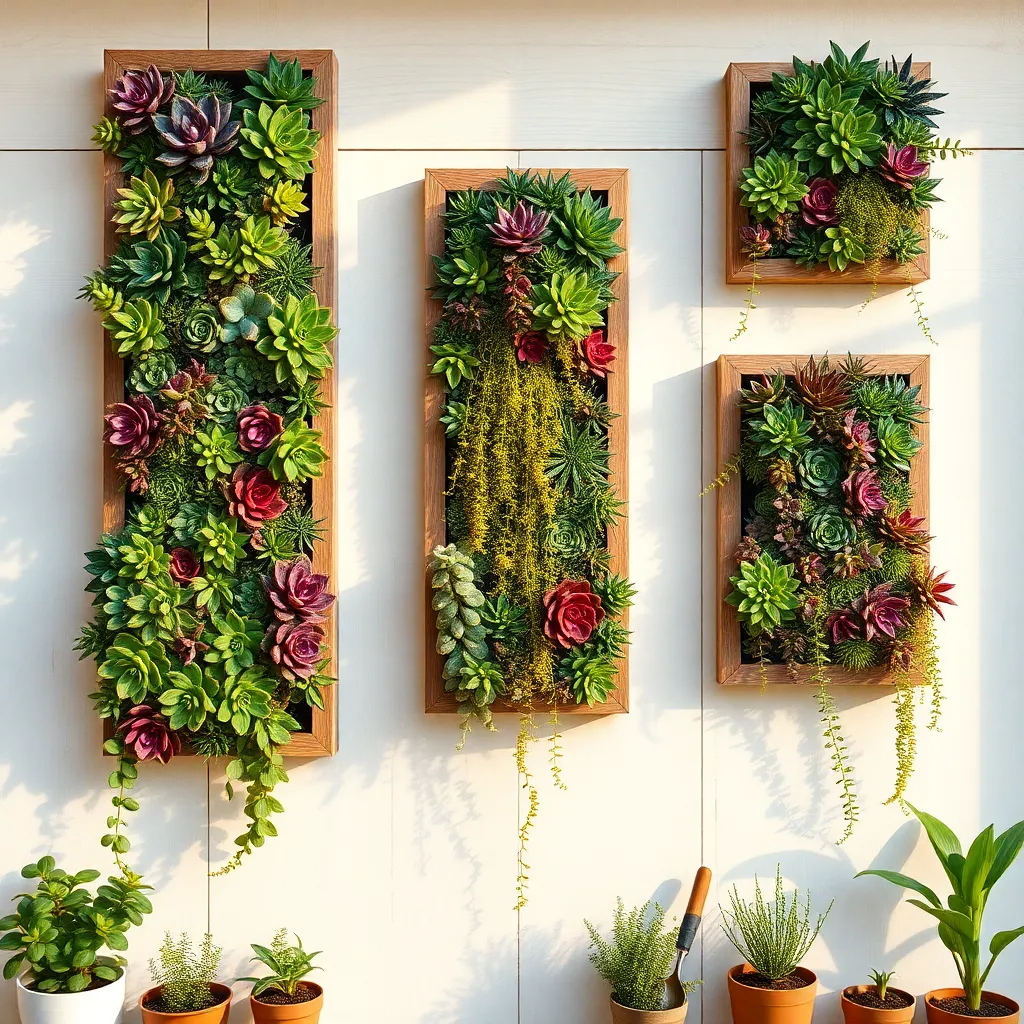
Wall-mounted succulent frames are an innovative way to bring greenery into your home without taking up floor space. These vertical gardens are perfect for those who have limited space but still want to enjoy the beauty of succulents.
To create a successful wall-mounted succulent frame, start with a sturdy frame and a wire mesh backing. Ensure the frame is deep enough to hold at least two inches of a well-draining succulent soil mix.
When choosing succulents for your frame, select a variety of shapes and colors for a visually appealing display. Consider using rosette-forming succulents like Echeveria and trailing types like Sedum to add dimension and interest.
Proper watering is crucial for the health of your wall-mounted succulents. Allow the soil to dry out completely between waterings, which typically means watering every two weeks, depending on your climate and indoor conditions.
Position your succulent frame in a location that receives bright, indirect sunlight. If natural light is limited, supplement with a grow light to ensure your succulents thrive.
Advanced gardeners might consider installing an irrigation system for larger frames. This can help maintain consistent moisture levels and reduce the time spent on maintenance.
Hanging Succulent Gardens
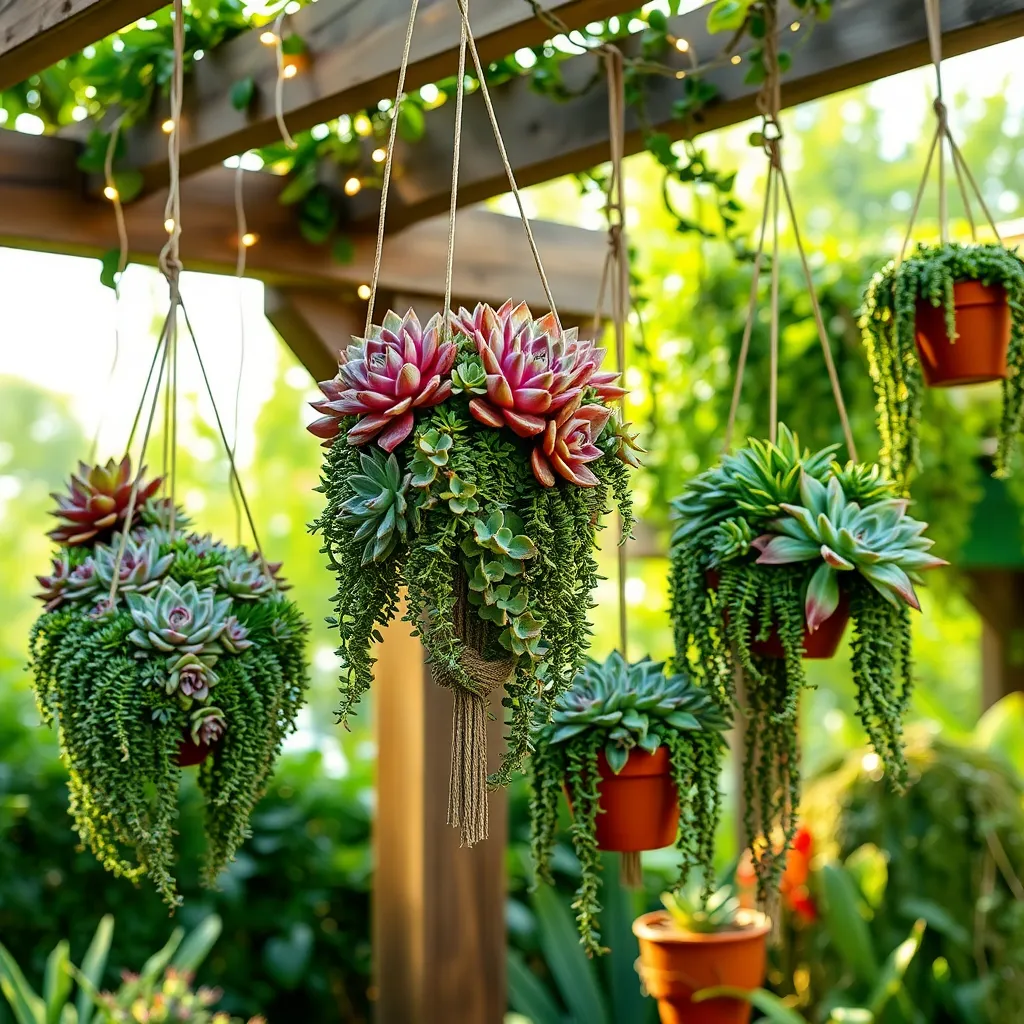
Hanging succulent gardens offer a unique way to bring greenery into your space without sacrificing floor area. These vertical displays are perfect for small spaces or to add a touch of nature at eye level.
To create a thriving hanging succulent garden, begin by selecting a sturdy container with proper drainage holes. Succulents prefer well-draining soil, such as a cactus mix, to prevent water from pooling at the roots.
When arranging your succulents, choose a variety of types for visual interest and texture. Consider mixing trailing varieties like string of pearls with upright types like echeveria for a dynamic display.
Watering is crucial but should be done sparingly; typically, once every two weeks is sufficient, depending on humidity levels. Ensure the soil dries out completely between waterings to mimic their natural arid environment.
For those looking to enhance their gardening skills, try incorporating a slow-release fertilizer at the start of the growing season. This will provide the essential nutrients succulents need to thrive over time.
With the right care and attention, a hanging succulent garden can become a stunning and low-maintenance feature in any home. Regularly check for pests and remove any dead leaves to keep your display fresh and healthy.
Repurposed Pallet Designs
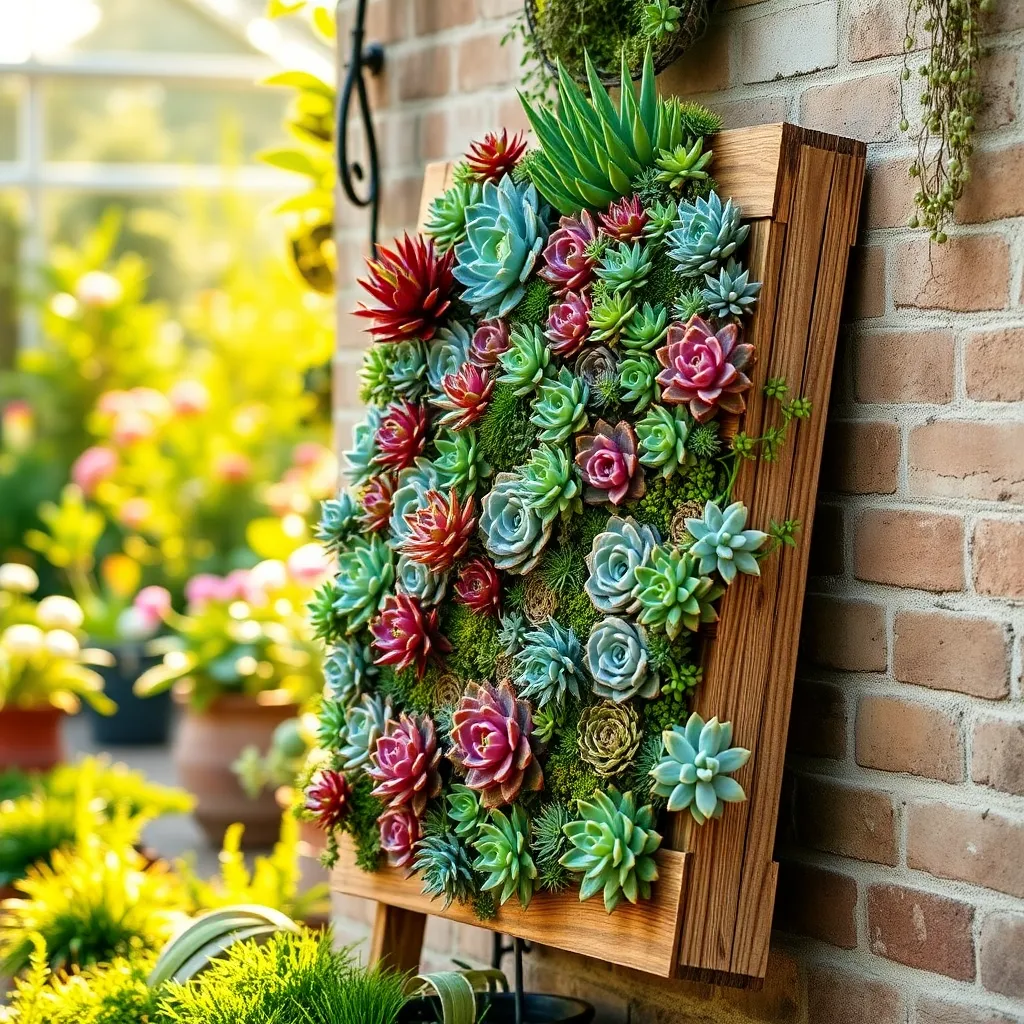
Repurposed wooden pallets offer a creative and sustainable way to build vertical succulent gardens. By using these readily available materials, you can craft a unique display suitable for small spaces like balconies or patios.
To prepare a pallet for planting, first ensure it is clean and free of any chemicals or pests. Seal any rough edges with sandpaper, and line the back and sides with landscape fabric to keep the soil in place.
Choosing the right succulents is crucial for a thriving pallet garden. Opt for drought-tolerant varieties such as hens-and-chicks, sedum, or echeveria, which can thrive with minimal soil and water.
When planting, fill the pallet with a well-draining cactus mix or a combination of regular potting soil and sand. Arrange the succulents with the larger ones at the bottom to prevent overshadowing the smaller plants.
Water your vertical garden sparingly to prevent root rot, allowing the soil to dry out completely between waterings. Consider placing the pallet in a location that receives a few hours of morning sun each day, as too much direct sunlight can scorch the succulents.
For added interest, incorporate small decorative stones or pebbles around the plants. This not only enhances the aesthetic but also helps retain moisture and suppress weeds.
Creative Use of Gutters
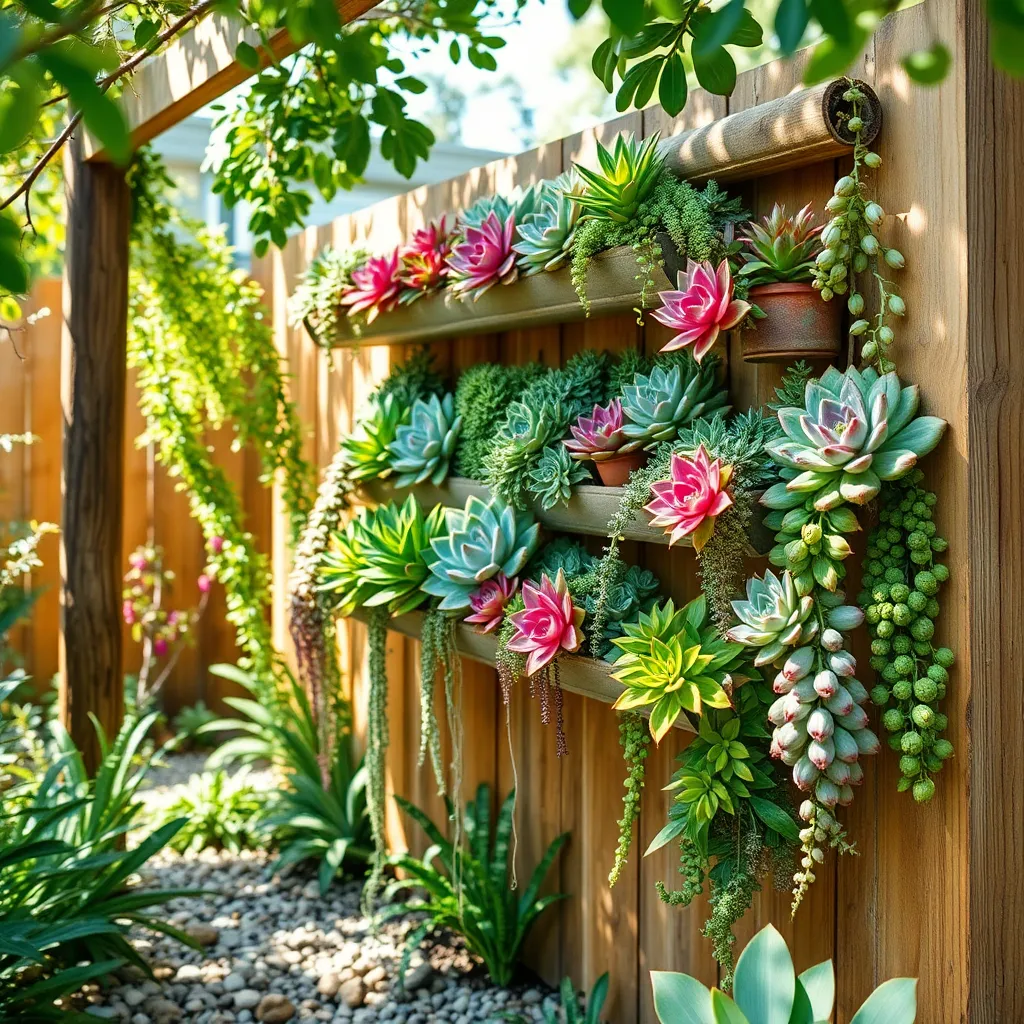
Transform old gutters into creative vertical succulent gardens by attaching them to walls or fences. This setup not only saves space but also adds a unique, modern aesthetic to your garden area.
When using gutters, ensure they have proper drainage to prevent waterlogging, which can harm succulents. Drill small holes in the bottom of each gutter section and line them with a layer of gravel for additional drainage.
Fill the gutters with a well-draining soil mix, ideally one made specifically for succulents and cacti. Look for a blend containing sand, perlite, and potting soil to ensure your plants receive the right balance of moisture and airflow.
For beginners, start with hardy succulent varieties such as hens and chicks or sedum, which are forgiving of occasional care lapses. These plants thrive in bright, indirect sunlight and need watering only when the soil is dry, making them perfect for low-maintenance gardening.
Succulent Towers and Totems
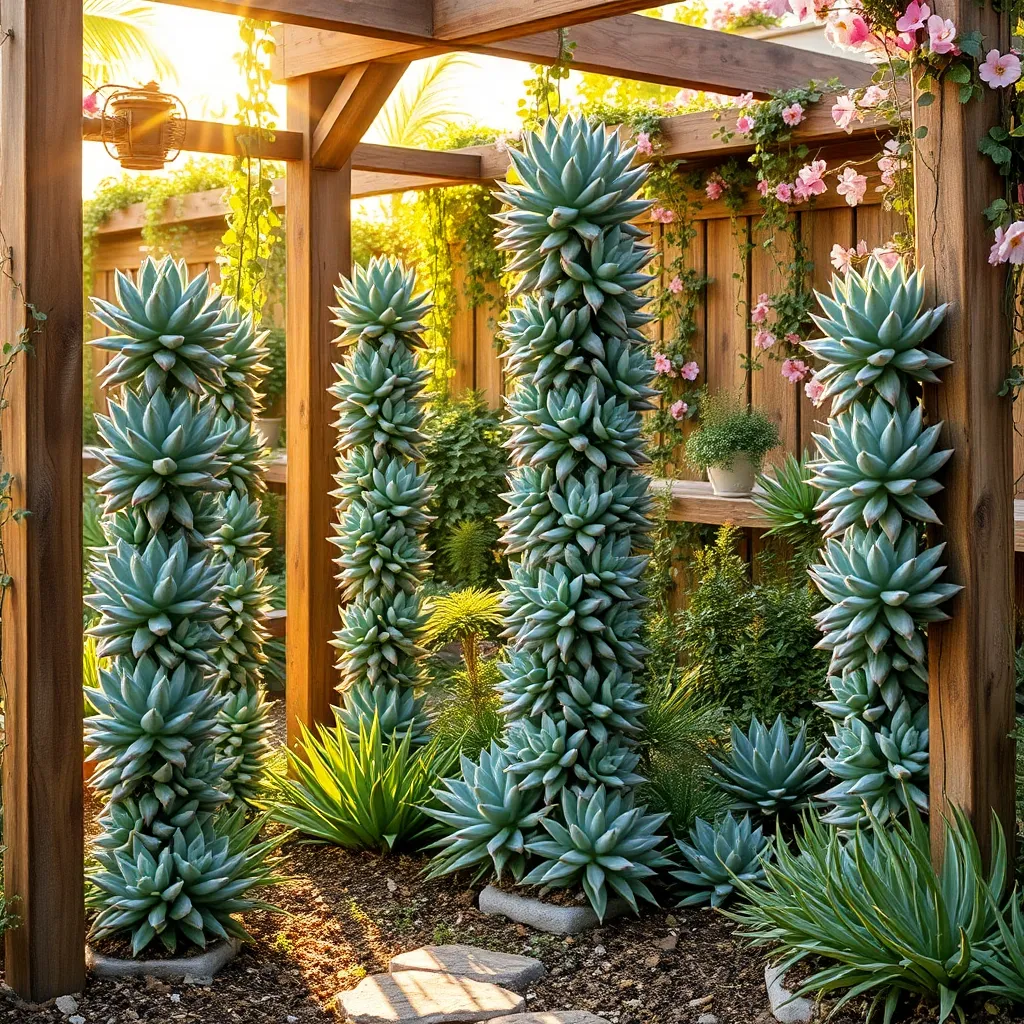
Succulent towers and totems offer a striking way to display a variety of succulents vertically, making them perfect for small spaces or as a garden focal point. To create a successful succulent tower, begin by selecting a sturdy frame or support structure that can hold the weight of the plants and soil.
Choose succulents that have similar light and water requirements to ensure your tower thrives. Opt for a well-draining soil mix, such as a combination of cactus soil and perlite, to prevent root rot and allow for proper drainage.
When planting your succulents, start from the bottom and work your way up to ensure stability. It’s important to pack the soil firmly around each plant to provide support, especially in a vertical orientation.
Watering can be a challenge with vertical gardens, so use a spray bottle to lightly mist the plants once a week or when the top inch of soil feels dry. Consider the light conditions where your tower will be placed; most succulents prefer bright, indirect sunlight, so adjust the location accordingly.
For an advanced touch, incorporate a slow-release fertilizer into the soil mix to provide nutrients over time. Regularly check for pests and remove any dead leaves to keep your succulent tower looking its best throughout the year.
DIY Picture Frame Gardens
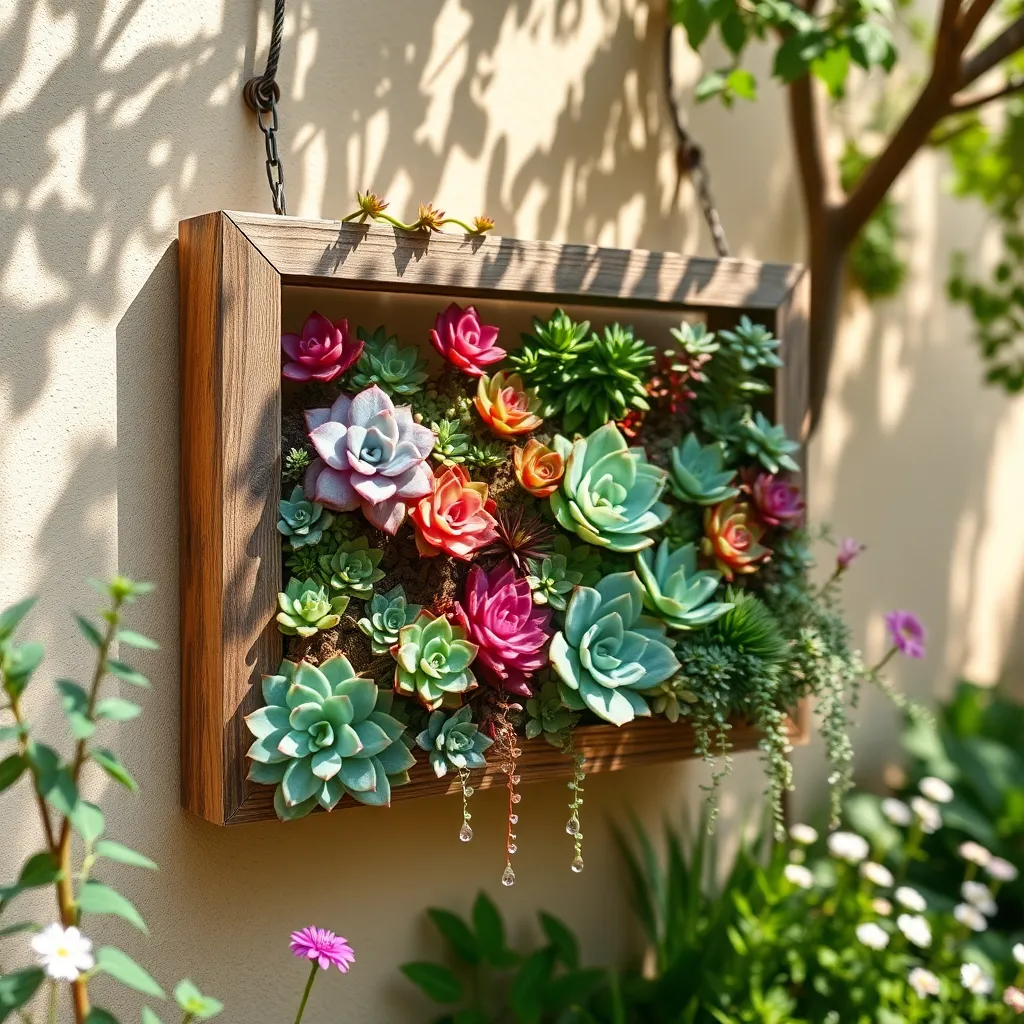
Transforming empty picture frames into vibrant vertical gardens can be a fun and rewarding project for succulent enthusiasts. Begin by selecting a sturdy frame and attaching a shallow box to the back to hold soil and plants securely.
Fill the box with a well-draining soil mix, such as a blend of cactus soil and perlite, to ensure healthy root growth. Succulents thrive in bright, indirect light, so place your frame garden in a sun-drenched spot, like a windowsill or patio wall.
When selecting succulents, choose varieties with similar water and light requirements to make maintenance easier. For beginners, consider using hardy types like Echeveria, Sedum, or Crassula, which are known for their resilience and vibrant colors.
To plant, gently remove each succulent from its nursery pot and arrange them within the frame, pressing them into the soil mix. Water sparingly, allowing the soil to dry out completely between waterings to prevent root rot—a common issue with overwatering.
Advanced gardeners might experiment with creating intricate designs or patterns using contrasting succulent colors and textures. Regularly rotate your frame to ensure even light exposure and prune any leggy growth to maintain a tidy appearance.
Living Succulent Wreaths
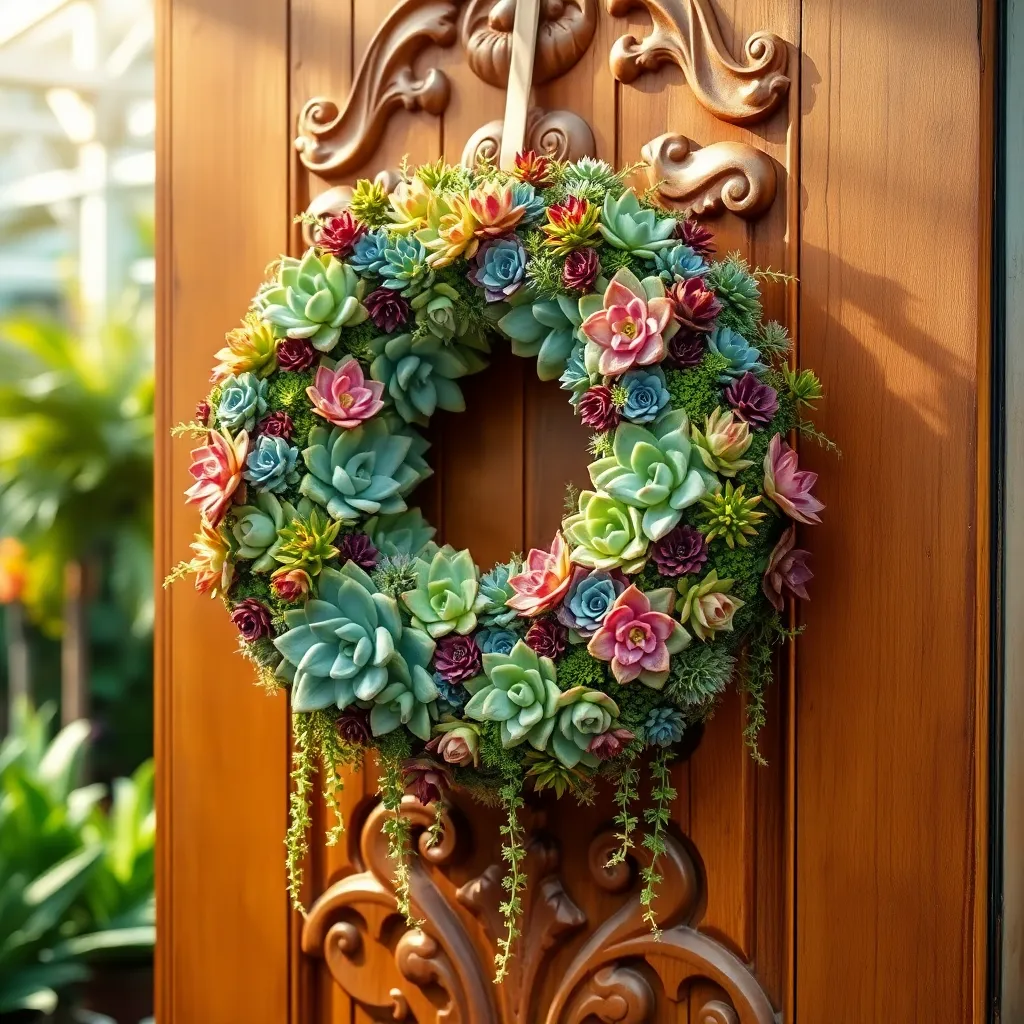
Creating a living succulent wreath is a delightful way to bring vertical gardening into your home or outdoor space. Start by selecting a sturdy wire frame, which can be found at most gardening stores, and line it with sphagnum moss to act as a water-retentive base.
Choose a variety of succulent cuttings to add visual interest and texture to your wreath. Popular choices include Echeveria, Sedum, and Crassula, which thrive in well-draining soil and bright, indirect sunlight.
Before planting, soak the sphagnum moss and allow it to drain to ensure it retains moisture without becoming waterlogged. Then, gently insert the succulent cuttings into the moss, securing them with floral pins if necessary to keep them in place as they root.
Water your living wreath sparingly, allowing the moss to dry out completely between waterings. Over-watering is a common mistake with succulents, so aim to mist the wreath lightly every one to two weeks, depending on the humidity of your environment.
For a more robust wreath, periodically rotate it to ensure all sides receive equal sunlight exposure. As the succulents grow, trim them back to maintain the desired shape and encourage fuller growth, which will result in a lush, vibrant display.
Tiered Vertical Arrangements
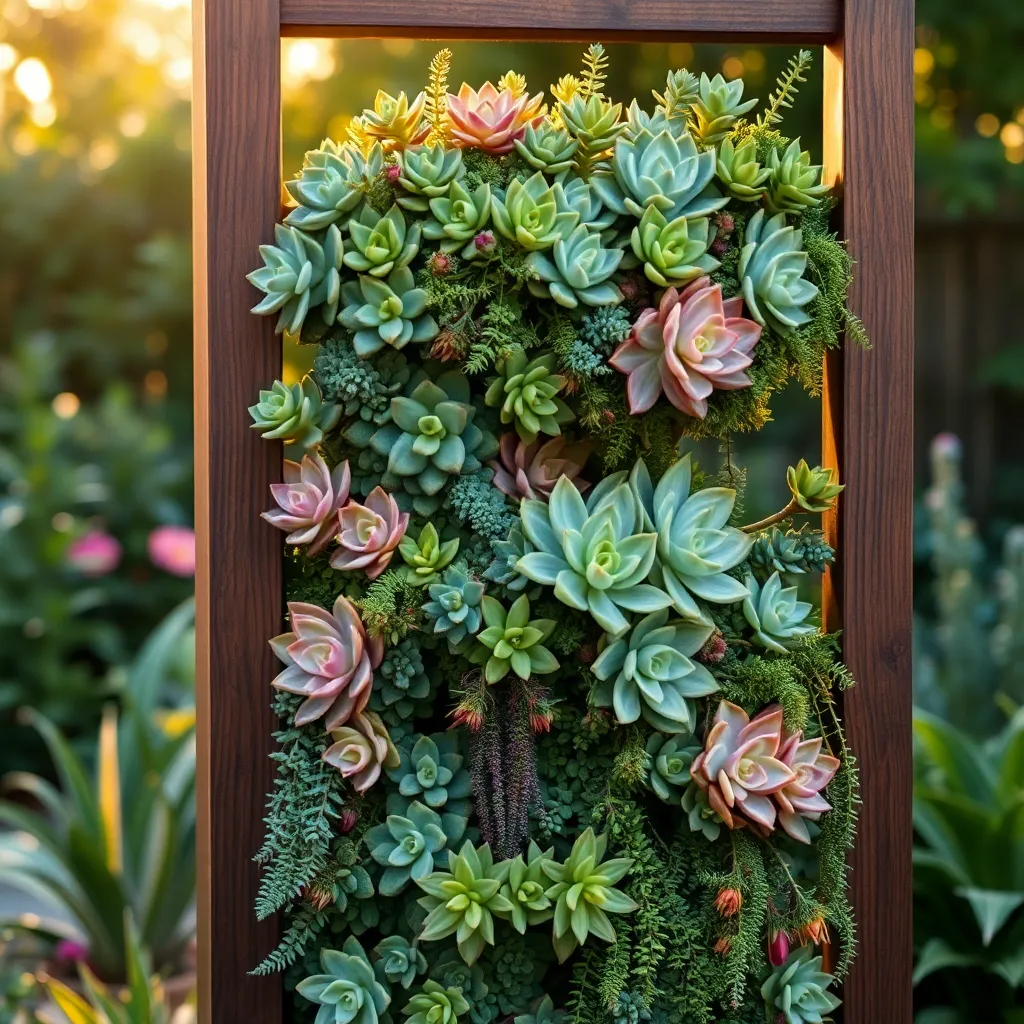
Tiered vertical arrangements offer a unique way to display succulents, maximizing space and creating visual interest. To create a successful tiered arrangement, start by selecting a variety of succulents with different shapes and colors to provide contrast and depth.
Choose lightweight, stackable containers that have good drainage to prevent waterlogging. Arrange the tiers so that each level receives sufficient sunlight, which is essential for the health of your succulents.
Begin with a sturdy base to ensure stability, especially if you’re planning to place the arrangement outdoors. Use a well-draining soil mixture like cactus mix or a blend of potting soil, sand, and perlite, which helps maintain the right moisture balance.
Watering can be a challenge with vertical arrangements, so aim to water thoroughly but allow the soil to dry out completely between sessions. For an advanced technique, consider integrating a drip irrigation system to provide consistent moisture without overwatering.
Succulent Trellis Concepts
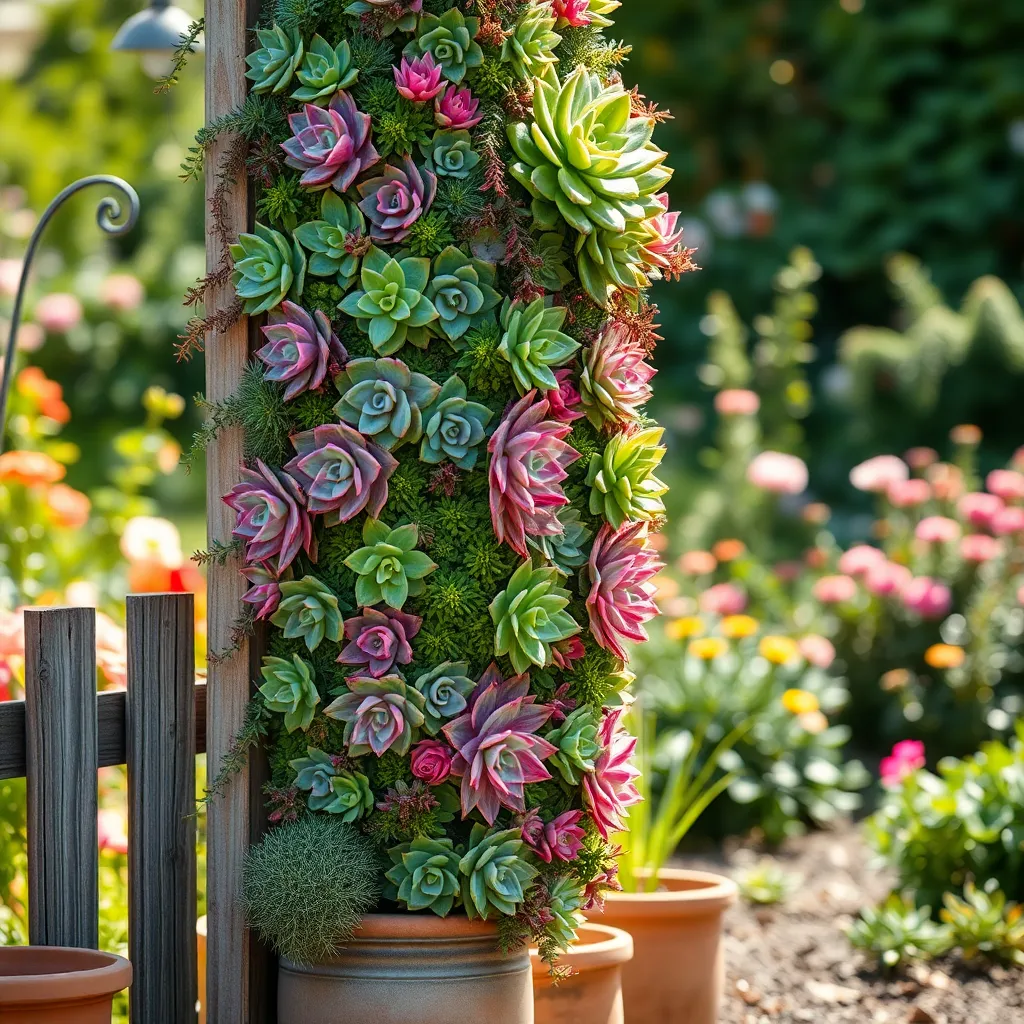
Incorporating a trellis into your succulent garden can add vertical interest and provide a unique way to display your plants. Begin by selecting a sturdy trellis made of materials like metal or wood to ensure it can support the weight of growing succulents over time.
Start by choosing succulents that naturally trail or climb, such as Senecio rowleyanus (string of pearls) or Rhipsalis species. These plants are ideal for trellises because their trailing habits allow them to elegantly drape over the structure.
When planting, use a well-draining soil mix specifically designed for succulents to prevent root rot. Ensure the trellis is positioned in an area where your succulents will receive plenty of sunlight, as most succulents thrive in bright, indirect light.
For more advanced gardeners, consider experimenting with a living wall trellis by attaching moss or coco coir to the structure, which can retain moisture for the roots. Water the succulents moderately, allowing the soil to dry out completely between waterings, typically every 7-10 days depending on the climate.
Incorporating Driftwood Structures
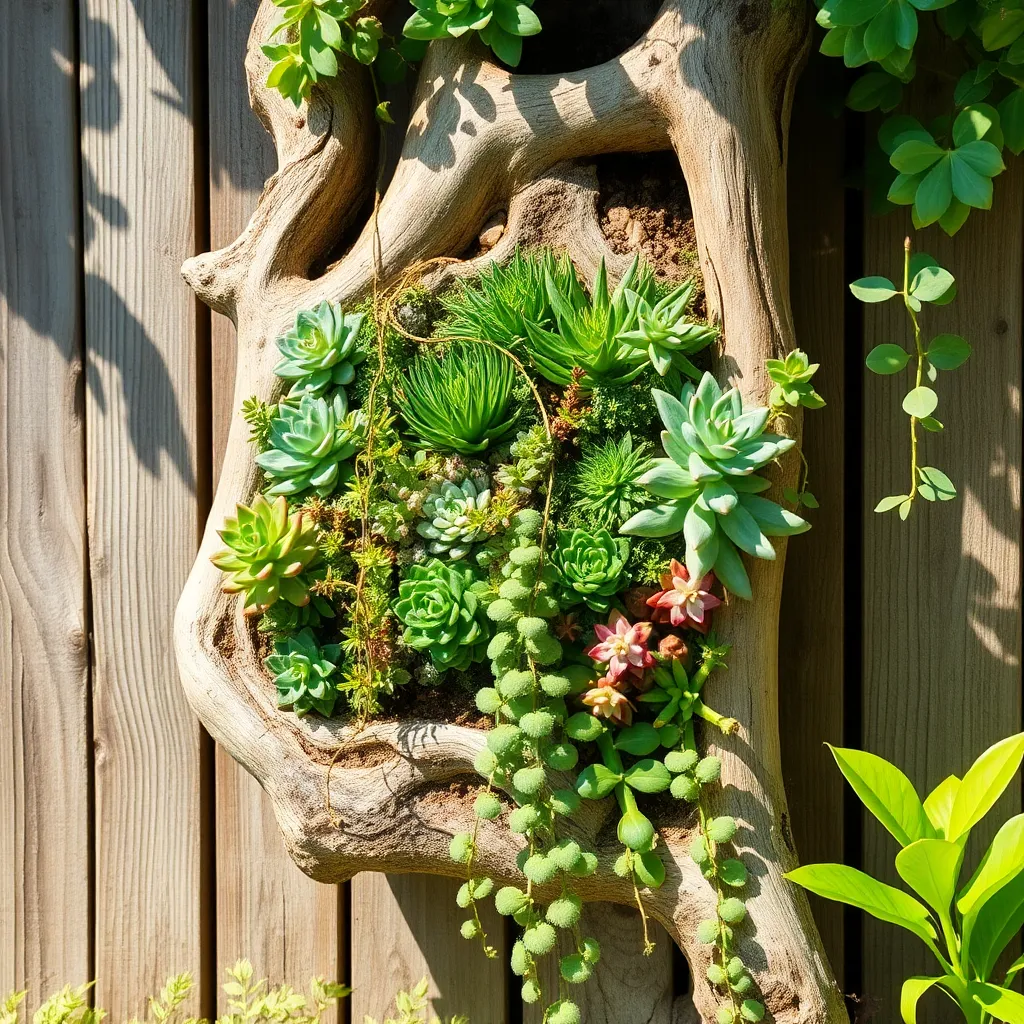
Incorporating driftwood structures into your vertical succulent garden can add a rustic charm that’s both natural and artistic. Choose pieces of driftwood with unique shapes and crevices, as they provide excellent nooks for planting small succulents like sedums or echeverias.
To securely place succulents on driftwood, use a mixture of cactus soil and sphagnum moss to create pockets for planting. This combination offers excellent drainage while retaining enough moisture for the roots to thrive.
When arranging your driftwood display, consider the light requirements of the succulents you choose. Most succulents prefer bright, indirect light, so place your driftwood structure in an area that receives plenty of sunlight throughout the day.
For those wanting to add a touch of creativity, try embellishing your driftwood with small pebbles or decorative sand between the succulents. This not only enhances the visual appeal but also helps with moisture retention, benefiting the overall health of your plants.
Upcycled Materials for Vertical Growth
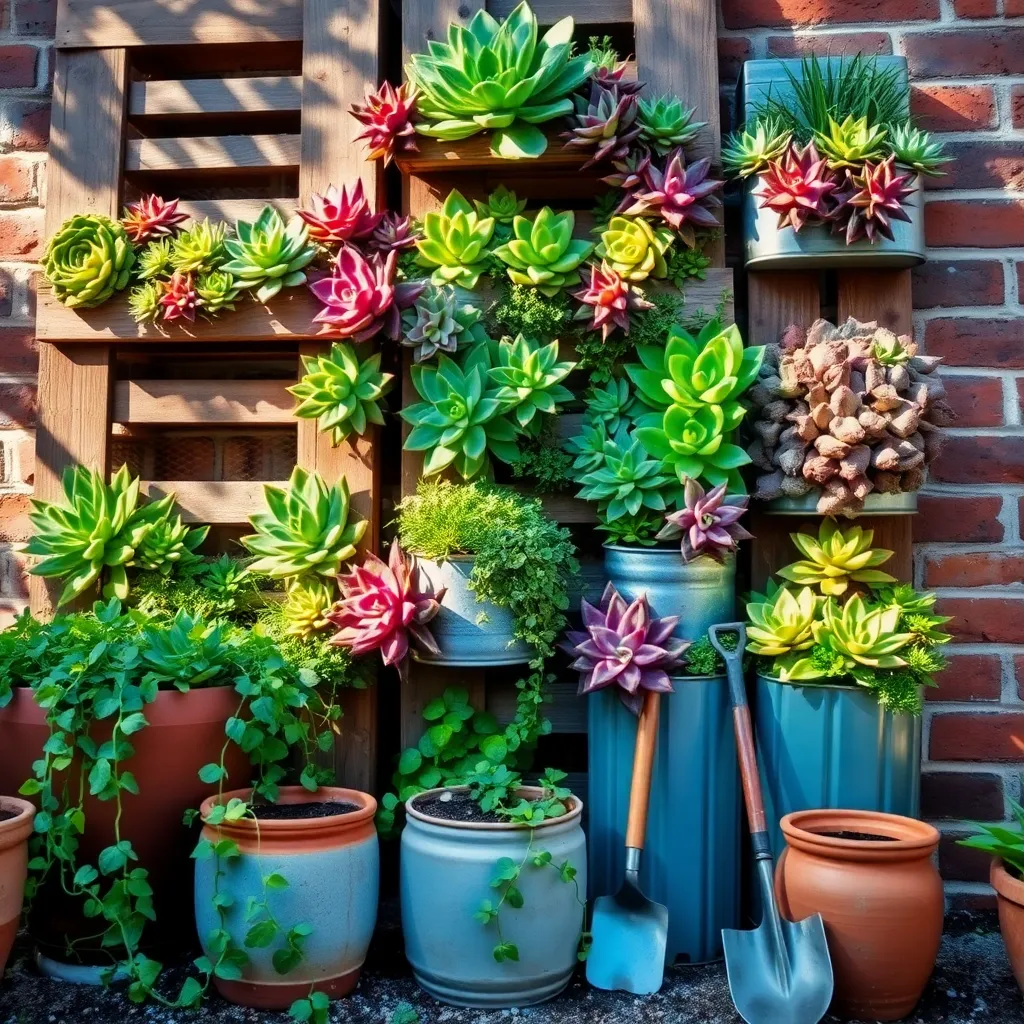
Using upcycled materials for vertical growth not only promotes sustainability but also adds a unique character to your garden. To start, consider using old wooden pallets, which can be easily transformed into a vertical planter with just a few modifications.
Securely attach landscape fabric to the back and sides of the pallet to hold soil in place. Succulents thrive in well-draining soil, so fill the pallet with a mix specifically designed for cacti and succulents.
Always ensure the pallet is positioned in an area where it receives plenty of indirect sunlight, as too much direct sunlight can scorch the plants. Water the succulents sparingly, allowing the soil to dry out completely between waterings to prevent root rot.
For a more advanced project, you might use discarded gutters as planters by mounting them on a sturdy frame. Drill drainage holes in the bottom and fill with a lightweight potting mix to keep your succulents healthy.
Maintaining Vertical Succulent Gardens
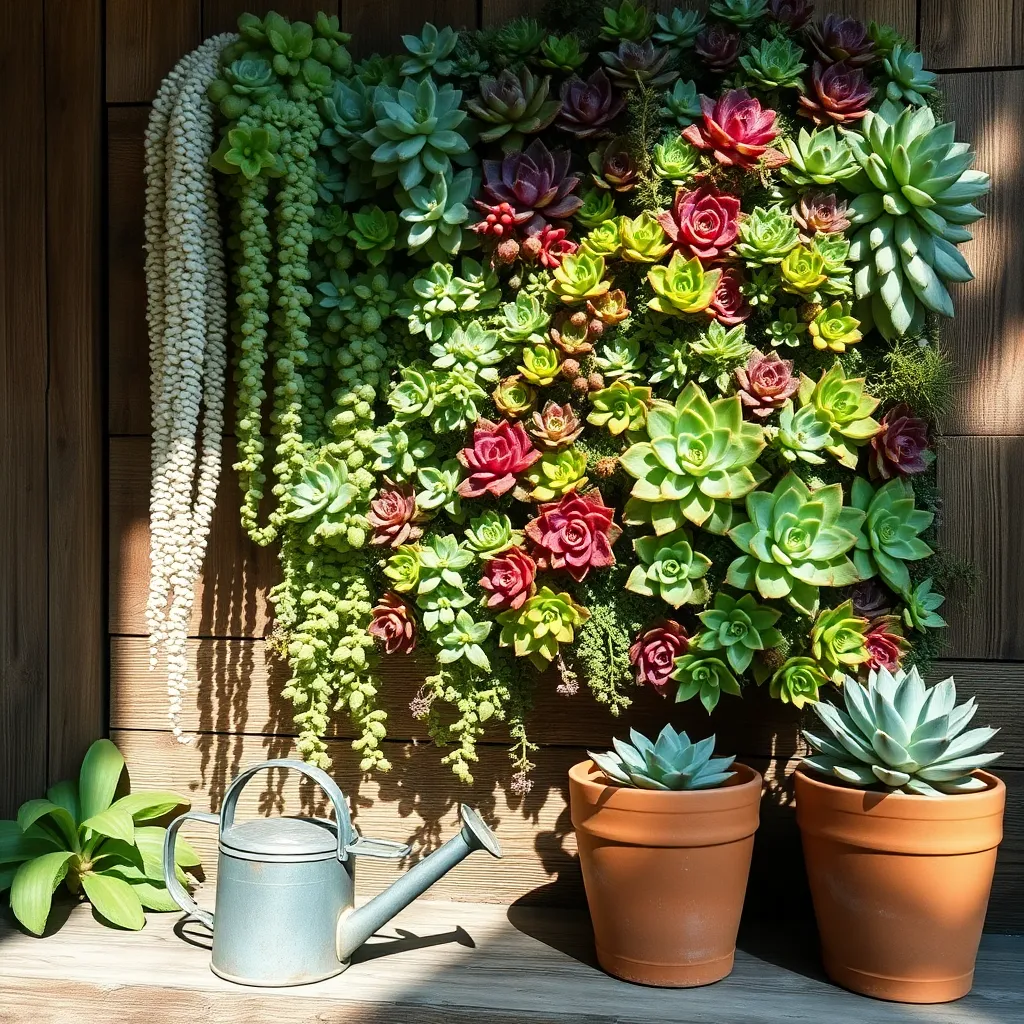
Vertical succulent gardens are a stunning way to display these hardy plants, and maintaining them requires a few focused efforts. To start, choose a well-draining soil mix, such as a cactus or succulent blend, to prevent root rot.
Regular watering is crucial, but it’s essential to avoid overwatering. Generally, succulents thrive when watered once every two to three weeks, but adjust based on your climate and the garden’s location.
Light is another critical factor; most succulents prefer bright, indirect sunlight. If your garden is indoors, consider placing it near a south-facing window or supplementing with grow lights to ensure the plants receive enough light.
For those looking to take their vertical gardens to the next level, consider experimenting with different succulent varieties. Mix contrasting colors and textures to create a vibrant and visually appealing display.
Conclusion: Growing Success with These Plants
In exploring the ’13 Vertical Succulent Garden Designs’ article, we’ve uncovered key relationship concepts that mirror the art of nurturing a garden. From laying a strong foundation (designing the right space) to fostering growth (consistent care) and creating resilience (choosing adaptable succulents), each design illustrates the importance of intention, patience, and creativity in relationships. We’ve also highlighted the significance of diversity, balance, and shared goals, just as in a well-curated garden.
To cultivate these insights in your own relationships, take a moment today to identify one area in your relationship that could benefit from a little more nurturing—whether it’s through open communication, shared activities, or simply spending quality time together.
Remember, successful relationships, like thriving gardens, are ever-evolving. Bookmark this article to revisit these concepts and keep your relationship flourishing. As you embark on this journey, envision a future where your relationships are not just surviving, but thriving—imbued with depth, resilience, and joy. With dedication and care, your relationship can become a vibrant tapestry, much like a beautifully arranged succulent garden. Save this guide to continue nurturing a thriving relational landscape.

